Mahle-Clevite White Paper on Bearing Clearance Issues
This quote comes directly from a Mahle-Clevite white paper on bearing clearance, then I'll summarize at the end.
For most applications .00075 to .0010” (three quarters to one thousandth of an inch) of clearance per inch of shaft diameter is a reasonable starting point.
...
Using this formula will provide a safe starting point for most applications. For High Performance engines it is recommended that .0005” be added to the maximum value determined by the above calculation. The recommendation for our 2.000” shaft would be .0025” of clearance.
...
High Performance engines on the other hand, typically employ greater bearing clearances for a number of reasons. Their higher operating speeds result in considerably higher oil temperatures and an accompanying loss in oil viscosity due to fluid film friction that increases with shaft speed. Increased clearance provides less sensitivity to shaft, block, and connecting rod deflections and the resulting misalignments that result from the higher levels of loading in these engines. Use of synthetic oils with their better flow properties
can help to reduce fluid film friction.
...
Use of these coated bearings may result in slightly less clearance than the uncoated CLEVITE 77® high performance parts for the same application. This will typically be in the range of .0005.” This is because the coating, although expected to remain in place during service, is considered to be somewhat of a sacrificial layer. Some amount of the coating will be removed during break-in and operation, resulting in a slight increase in clearance.
Here's what this means to you. If you run high horsepower and high RPM, then you need extra bearing clearance, not less of it. The coated bearings are great, but you have to size your journals for them; and as Alekshop mentioned
in a previous thread, you shouldn't have coated parting lines. If you have coated parting lines you must remove the coating in this area before using these bearings.
Mahle-Clevite recommends adding an extra 0.0005 for good measure for high horsepower, high RPM, and coated bearing applications. To see some numbers in real life, please see the following examples.
Factory clearance: 0.00125
Factory clearance with Calico coated bearings: 0.00085 - 0.00105 (16-32% smaller).
Factory clearance with TriArmor coated bearigns: 0.00075 - 0.00095 (24-40% smaller).
Recommended clearance for mains (70mm journal):
0.00100/inch + 0.0005 = 0.00325
0.00075/inch + 0.0005 = 0.00256
Recommended clearance for rods (52mm journal):
0.00100/inch + 0.0005 = 0.00205
0.00075/inch + 0.0005 = 0.00153
So there you have it: ideal mains should be 0.0025 - 0.0032 and ideal rods should be 0.00153 - 0.00205. You're given 0.00125 clearance from the factory and some may be thinking of reducing it another 16-40% with coated bearings without sizing the journals because they believe it gives them extra protection. The extra protection is true if you kept all things the same including the bearing clearance; but reducing the bearing clearance by 16-40% to get the extra protection of the coating is not recommended.
Some Photo Evidence of Oil Starvation
Time to add some pictures to the discussion to see what a bearing looks like due to lack of clearance. The first few pictures come straight from Mahle-Clevite. Thanks to BMRLVR for posting the B&W version of the Clevite bearing failure guide. I found the color version of the same thing. It looks like the color version has better pictures, but the B&W version might have some better illustrations and explanations. So here's both versions for reference.
B&W: hhttp://www.wilmink.nl/Clevite/Clevite_lagerschade_tech_info.pdf
Color:
http://catalog.mahleclevite.com/bearing
Using the color bearing failure guide, see example #12 "Oil Starvation / Marginal Oil Film Thickness." The two pictures below come from this example. According to Mahle-Clevite, the number-one cause of failure of this type is too little oil clearance.

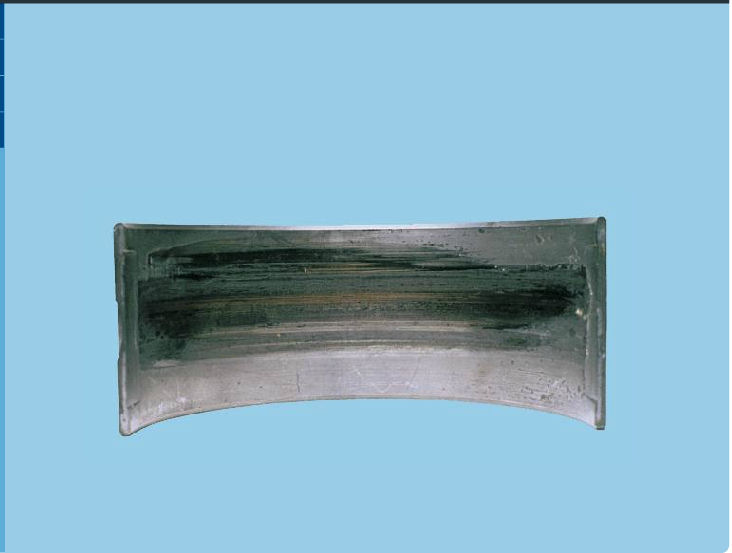
Next, let's compare these reference photos to some actual S65 bearings from various engines. Where possible, the mileage and circumstances will be mentioned. These photos are all found in other threads on this forum.
Engine-1: Modifications unknown, stock internals, Mileage: 24,000.
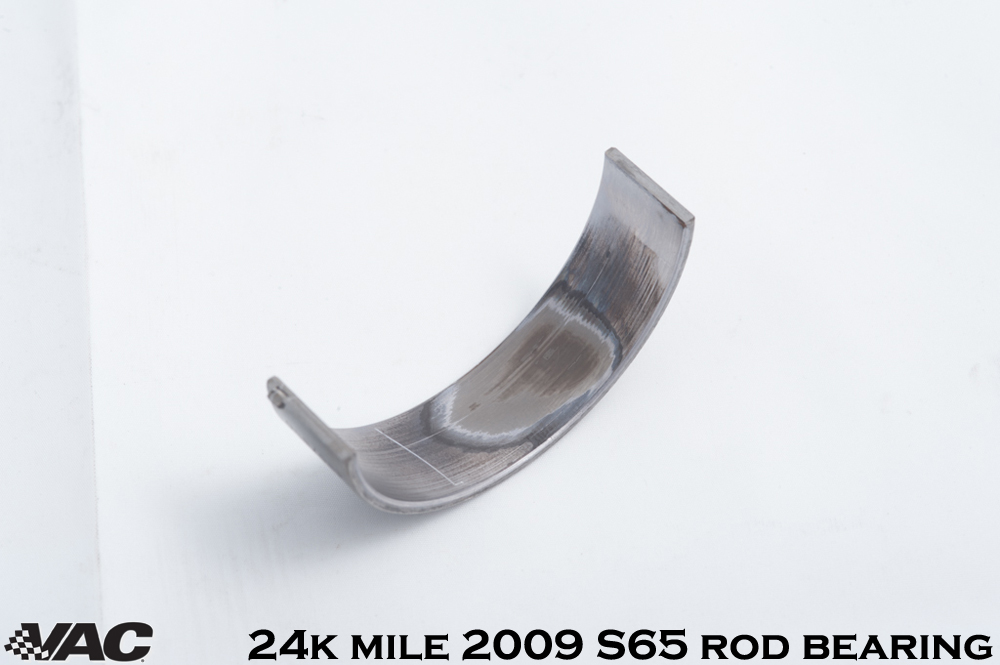 Engine-2: Bone Stock, stock internals. Mileage: ~20,000
Engine-2: Bone Stock, stock internals. Mileage: ~20,000
This bone stock engine suffered from main bearing failure. Notice the wear spot on the main bearing and the appearance of a channel the oil made to get around it. The connecting rod bearings aren't much better. Many of the connecting rod bearings show signs of excessive wear due to oil starvation (too little clearance).

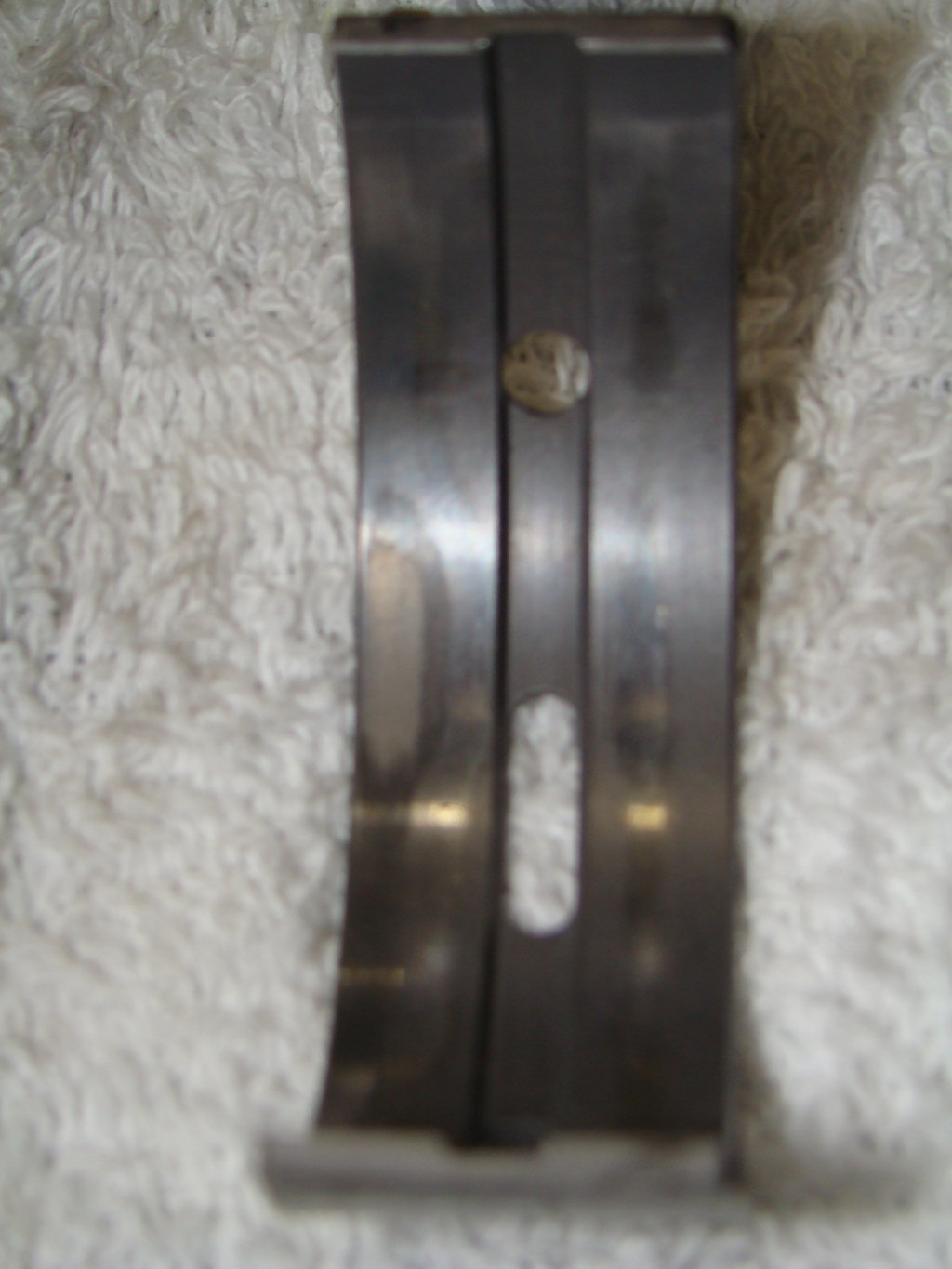


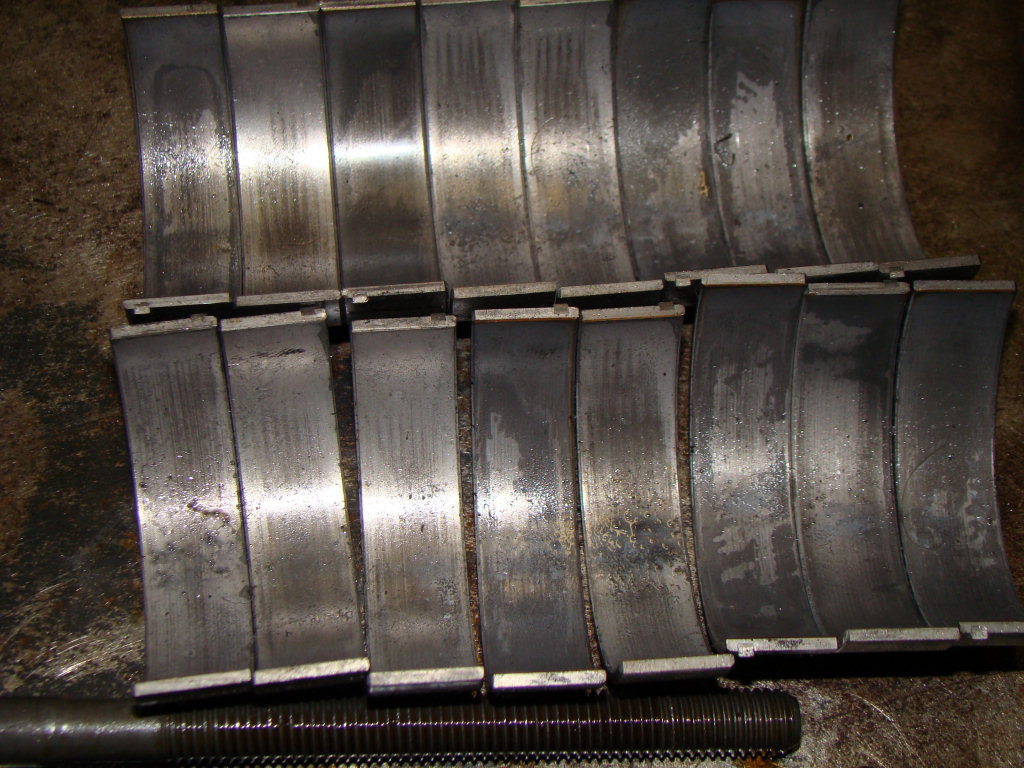
 Engine-3: Upgraded internals, supercharged, Mileage: 24,000
Engine-3: Upgraded internals, supercharged, Mileage: 24,000

 Engine-4: Stock internals, supercharged, Mileage: 72,000
Engine-4: Stock internals, supercharged, Mileage: 72,000
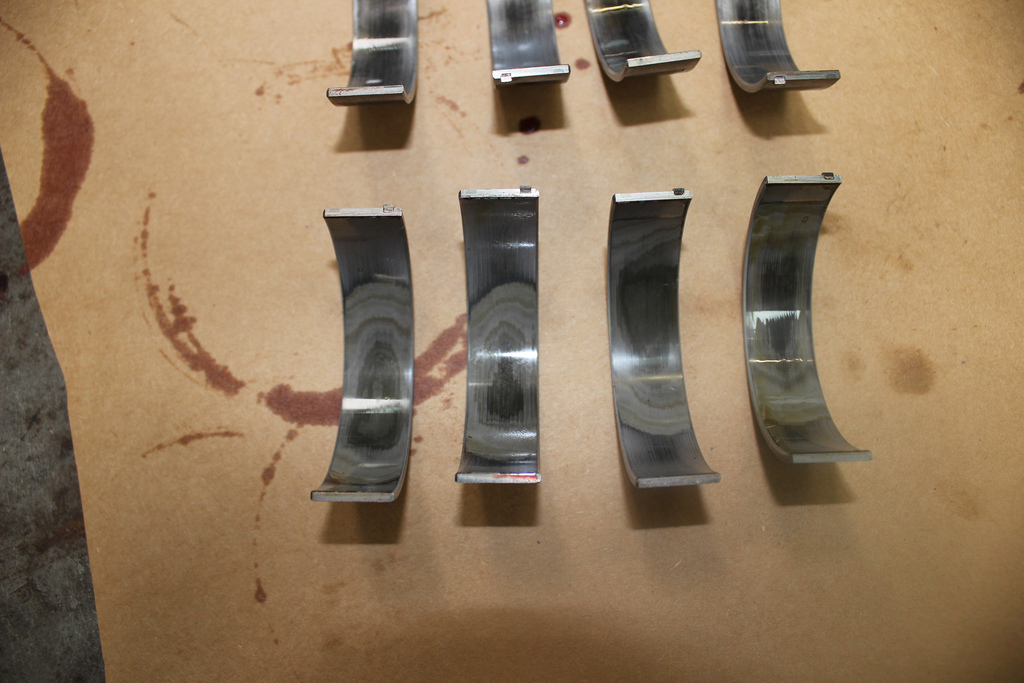 Engine-5: Stock internals, supercharged, Mileage: 90,000
Engine-5: Stock internals, supercharged, Mileage: 90,000

The connection between these pictures and the reference Mahle-Clevite pictures is obvious. Even though there can always be multiple causes of oil starvation and bearing failure, the number one cause of the damage shown in these pictures is listed by Mahle-Clevite as too little bearing clearance.
I have more photos that I will post in the Bearing Photo Database. I've got at least one set, maybe two sets of photos of broken (snapped) S65 connecting rods with the big end of the connecting rod turned blue due to excessive heat (oil starvation due possible bearing clearance).
I hope these photos have been helpful to see with your own eyes what this problem looks like, and why it's happening.